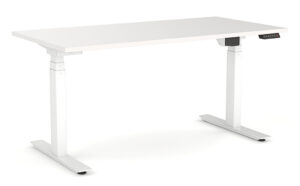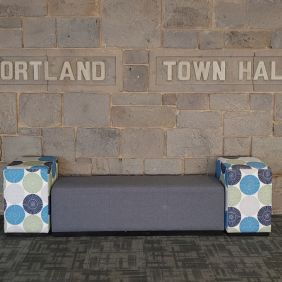If you’re looking for a way to improve your office space and increase your productivity, a standing desk may be the perfect solution. Standing desks have become increasingly popular in recent years, as more and more research has shown the many benefits of standing during the workday.
Most people spend a lot of time sitting behind the office desk. Whether you are working from home or from an office space, sitting for long periods of time can take a toll on your health. Research has shown that sitting for prolonged periods of time can lead to a variety of health problems, including obesity, heart disease, and cancer.
One of the best ways to combat these health risks is by standing more often throughout the day. A standing desk allows you to do just and we are going to explore all about it. At the end of this post, you will realize why the standing desk may be the perfect choice for your workspace.
What Is A Standing Desk?
A standing desk is a type of desk that allows you to stand while working. These desks are usually adjustable, so you can raise or lower the desk to find the perfect height for your needs.
desk to find the perfect height for your needs.
There are different types of standing desks available on the market, including electric standing desks, manual standing desks, and converters that allow you to convert your existing desk into a standing desk.
The Benefits of Using a Standing Desk
Standing desks are gradually becoming popular in workspaces because of the many benefits they offer. Some of the most notable benefits of using a standing desk include:
Reduced Risk of Health Problems
As mentioned earlier, sitting for long periods of time can lead to health problems such as obesity, heart disease, and cancer. Standing more often can help reduce your risk of developing these health problems.
Improved Posture
When you sit behind a desk all day, it can cause you to slouch and adopt poor posture. This can lead to back pain and other musculoskeletal problems. Standing desks can help improve your posture by keeping you upright and encouraging you to stand tall.
Improved blood circulation
When you sit for long periods of time, your blood circulation can slow down. This can lead to a variety of health problems, such as varicose veins, deep vein thrombosis, and blood clots. Standing up more often will help improve your blood circulation.
Increased productivity
Standing desks have also been shown to increase productivity. One study found that employees who used standing desks were more productive than those who sat at their desks all day.
Another study found that students who used standing desks were better able to focus on their work and had improved test scores.
Reduces Back Pains
If you suffer from back pains, a standing desk may help. One study found that workers who used standing desks reported less back pain than those who sat at their desks all day.
There are many other benefits of using a standing desk, including improved focus, increased energy levels, and reduced neck and shoulder pain. If you’re looking for a way to improve your office space and increase your productivity, a standing desk may be the perfect solution.
Guide to Finding the Right Standing Desk for Your Office
Now that you know all about the benefits of using a standing desk, you may be wondering how to find the right one for your office. Here are a few tips to help you choose the perfect standing desk for your needs:
Consider Your Budget
The first thing to consider when choosing a standing desk is your budget. Standing desks can range in price from a few hundred dollars to a few thousand dollars, so it’s important to find one that fits your budget.
If you’re on a tight budget, there are many affordable standing desks available. If you’re looking for a high-end desk, there are also many luxurious options available.
Think About Your Needs
Another thing to consider when choosing a standing desk is your needs. Do you need a desk that’s large enough to accommodate a laptop and other office supplies? Or do you just need a small desk that allows you to stand while working?
Think about how you plan to use your desk and choose one that fits your needs.
Choose the Right Height
One of the most important things to consider when choosing a standing desk is the height. You need to make sure the desk is at a comfortable height for you to work at. If you’re not sure what height is right for you, there are many online calculators that can help you find the perfect fit. However, the best way would be to talk to office furniture experts to help you understand the perfect height.
Consider the Extras
When choosing a standing desk, you may also want to consider the extras. Some standing desks come with features such as built-in drawers and shelves, while others come with simple designs.
If you need extra storage space, choose a desk that comes with built-in drawers and shelves. If you don’t need extra storage space, a simple design may be all you need.
Choose a Material that Suits Your Style
Last but not least, you need to choose a material that suits your style. Standing desks are available in a variety of materials, such as wood, metal, and glass. If you prefer a traditional look, choose a desk made of wood. If you want a modern look, choose a desk made of metal or glass.
When choosing a standing desk, it’s important to take your time and consider all your options. With so many different standing desks available, you’re sure to find one that’s perfect for your office.
Final Thoughts
As you can see, there are tons of reasons why you should consider having a standing desk in your workspace. With the numerous options available on the market, you will certainly find the perfect fit.
We are excited to help you with all your standing desk needs. Feel free to reach out to us at any point and we will be happy to answer your questions.









